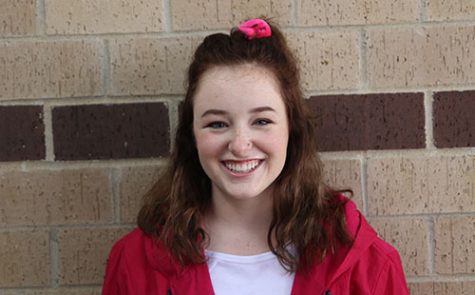What DHS students can do regarding the issue of school shootings

With the recent school shooting tragedy at Marjory Stoneman Douglas High School on Feb. 14 in Florida, questions about gun control and mental health awareness are dominating headlines, Twitter feeds and minds. The horror seen in footage recorded by victims and heard by their tales is sure to bring concern to many students across America, including those at De Soto High School.
While differing opinions on how to handle the epidemic of school shootings are apparent, DHS students will surely agree that safety in schools is of the utmost priority. Many may even feel compelled to try to make a change—a movement called the National School Walkout has circulated around Twitter, urging students to walk out of class in protest on April 20, the 19th anniversary of the Columbine High School shooting. But what can high school students, many under the age of 18 and therefore unable to vote, do to make schools safer in the meantime?
The first is to talk. Every student, regardless of age, political affiliation or opinion, is able to use his or her voice to create change. The most important thing about this issue is that we keep discussing it. We, as students, cannot allow this latest tragedy to become another number. If we keep talking about it, arguments on possible solutions can turn into compromise which can turn into change. Even those of us who cannot vote can at least contribute in a way where we are sharing our ideas and opinions and emotions. Our opinions are important, and if we talk about them consistently, there are enough students in America to reach the minds in Washington.
The second is to be vigilant. I absolutely do not blame students who have been affected by school shootings in any way (Donald Trump tweeted on Feb. 15 that we “must always report such instances [warning signs] to authorities, again and again!”). Students have not been adequately equipped with the right information to identify and report warning signs, so how should we expect them to prevent tragedies? If we are able to learn the information required to know actual warning signs, we may be able to prevent catastrophe while we continue discussion and compel Washington to make change. This could be executed in the form of a school-wide meeting discussing mental health and the specific signs that could lead to violence.
We must not forget the horrors of Feb. 14 or the 17 students and staff who lost their lives. We can’t let this divide the nation again, splitting so far into two sides that nothing ends up happening. As we continue talking about Marjory Stoneman Douglas and keep urging Washington and those able to vote to create change, we must do what we, as students, can do. Our voices are just as powerful.

Meet Abby Smith, the Green Pride's first Graphic Design Editor. This is Abby’s senior year, as well as her third year on staff. She has...

